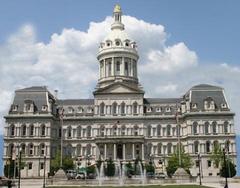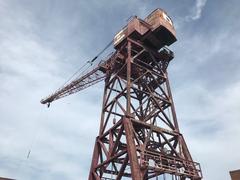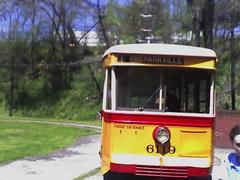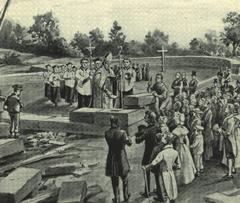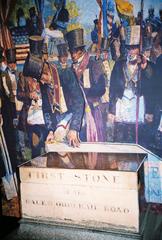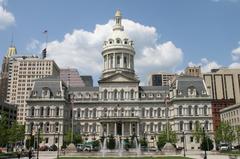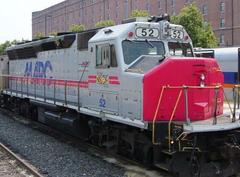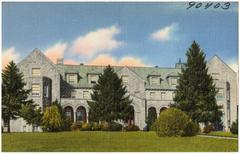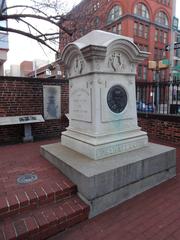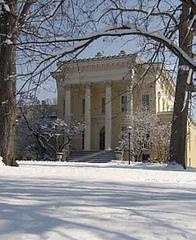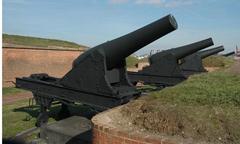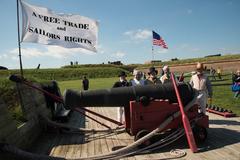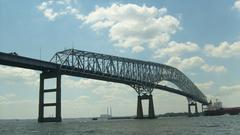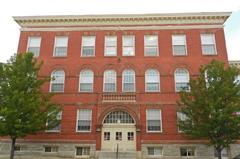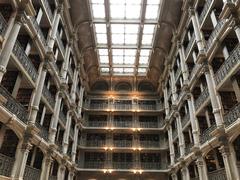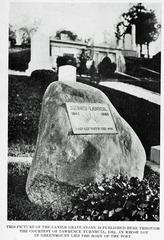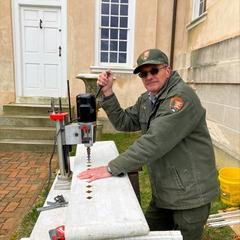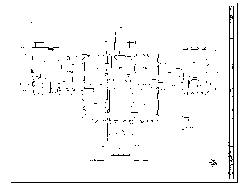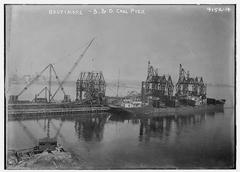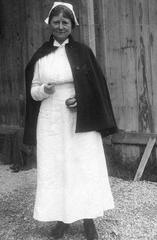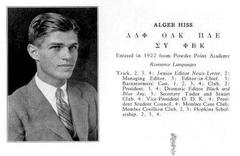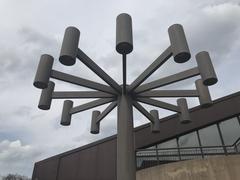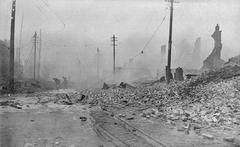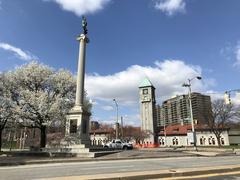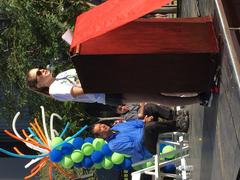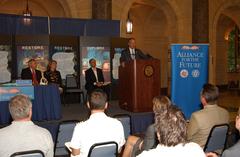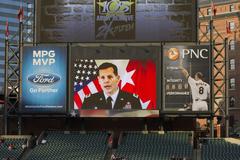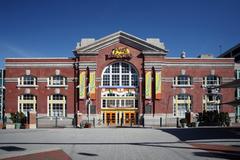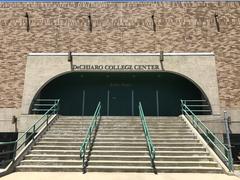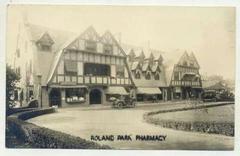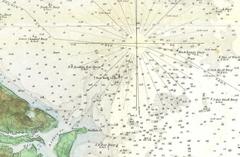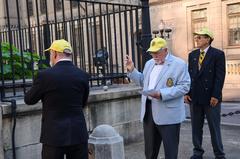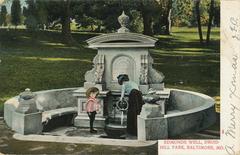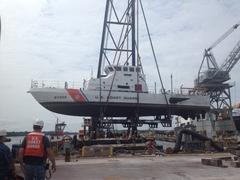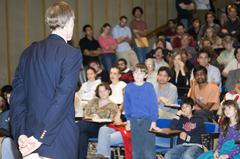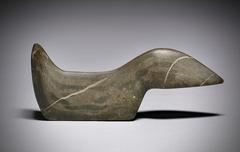
R Adams Cowley Shock Trauma Center Visiting Hours, Tickets, and Baltimore Historical Sites Guide
Date: 03/07/2025
Introduction
Situated in Baltimore, Maryland, the R Adams Cowley Shock Trauma Center is a pioneering institution in trauma medicine and emergency care. Renowned for its leadership in developing the nation’s first dedicated trauma hospital and Maryland’s coordinated emergency medical services system, the center stands at the forefront of trauma response and innovation in the United States. Founded under the guidance of Dr. R Adams Cowley—originator of the “golden hour” concept—the center has shaped trauma care both nationally and globally (UMMS Foundation). This guide provides a detailed overview of the center’s history, innovations, visiting information, accessibility, and its place within Baltimore’s rich historical and cultural landscape.
Table of Contents
- Introduction
- Origins and Vision of the R Adams Cowley Shock Trauma Center
- Development of the First Coordinated Trauma System
- Milestones in Trauma Care and Medical Innovation
- National and Global Significance
- Training and Education
- Community Impact and Outreach
- Leadership and Governance
- Visiting the R Adams Cowley Shock Trauma Center
- Frequently Asked Questions (FAQs)
- Related Articles
- Conclusion
Origins and Vision of the R Adams Cowley Shock Trauma Center
The center owes its existence to Dr. R Adams Cowley, a visionary in trauma medicine who recognized that rapid intervention within the critical “golden hour” drastically improves survival rates for trauma patients. His advocacy led to the establishment of the country’s first dedicated trauma center at the University of Maryland, providing a foundation for what would become a national model (UMMS Foundation).
Development of the First Coordinated Trauma System
Dr. Cowley’s work in the late 1960s and early 1970s led to the creation of the Maryland Institute for Emergency Medical Services Systems (MIEMSS), integrating pre-hospital care, rapid air transport, and specialized trauma facilities. This statewide system set a benchmark for trauma care delivery throughout the United States (PubMed), with the Shock Trauma Center serving as its hub.
Milestones in Trauma Care and Medical Innovation
Over five decades, the Shock Trauma Center has treated more than 200,000 patients, with an annual average of 6,000 critically ill or injured individuals and a 95% survival rate. Among its many innovations are:
- Physician-Led Go-Team: Deployment of surgical teams directly to trauma scenes, exceeding conventional EMS capabilities.
- Critical Care Resuscitation Unit (CCRU): A specialized facility managing over 1,500 critically ill patients yearly, including neurosurgical and cardiac emergencies.
- Center for Hyperbaric Medicine: Maryland’s only multi-place hyperbaric chamber, treating conditions such as carbon monoxide poisoning and decompression sickness.
- Lung Rescue Program: Advanced therapies like ECMO for acute respiratory and cardiac failure have been available since 2014.
National and Global Significance
The trauma system established by the Shock Trauma Center has been adopted nationwide, influencing trauma response protocols around the world (PubMed). Its integration of rapid transport, specialized care teams, and advanced resuscitation units has set the gold standard for emergency medical services.
Training and Education
The Center for Critical Care and Trauma Education offers a state-of-the-art, 10,000-square-foot simulation area, supporting programs such as Advanced Trauma Life Support (ATLS) and Advanced Trauma Care for Nurses (ATCN). These programs attract and train professionals globally (UMMS Foundation).
Community Impact and Outreach
The Center for Injury Prevention and Policy conducts outreach to over 32,000 Marylanders annually. Initiatives like “Stop the Bleed” have trained more than 10,000 individuals since 2017, empowering the community to respond to emergencies effectively (Howard County Government).
Leadership and Governance
A distinguished Board of Visitors—comprising leaders from government, business, and the community—guides the center’s mission to provide lifesaving care and a “second chance” for those facing critical injuries (UMMS Foundation).
Visiting the R Adams Cowley Shock Trauma Center
Visiting Hours and Tickets
As an active trauma hospital, the Shock Trauma Center limits general public access. Patient visiting hours typically run from 8:00 AM to 8:00 PM daily, but policies may change; always confirm in advance by calling 410-328-5770. No tickets are required for patient visits. Educational tours and special events require pre-registration.
Accessibility
The center is fully accessible, with wheelchair access and assistance services available. Designated accessible parking is provided nearby.
Location and Travel Tips
- Address: 110 South Paca Street, 9th Floor, Baltimore, MD 21201
- The center is accessible via car and public transportation. Baltimore’s Inner Harbor, Fort McHenry, and the Walters Art Museum are nearby, making it easy to combine a visit with other historical and cultural attractions.
Visuals and Interactive Media
Virtual tours, photo galleries, and survivor stories can be found on the center’s official website. Alt text—such as “R Adams Cowley Shock Trauma Center visiting hours” and “Baltimore historical sites”—is used for accessible and search-friendly content.
Frequently Asked Questions (FAQs)
Q1: Can the general public tour the R Adams Cowley Shock Trauma Center?
A: Public tours require advance scheduling and are typically limited to educational or professional groups.
Q2: What are the typical visiting hours for patients?
A: Generally 8:00 AM to 8:00 PM, but always confirm by phone.
Q3: Are tickets required?
A: No tickets are needed for patient visits; educational or special events may require registration.
Q4: Is the center accessible for visitors with disabilities?
A: Yes, it is fully accessible.
Q5: What nearby attractions can I visit?
A: The Inner Harbor, Fort McHenry, Walters Art Museum, and other historical sites are close by.
Related Articles
Conclusion
The R Adams Cowley Shock Trauma Center is a landmark of medical innovation in Baltimore. Its pioneering trauma system, global influence, and community outreach set it apart as a leader in both emergency care and public education. Whether you are a medical professional, history enthusiast, or community member, understanding the center’s visiting policies, accessibility, and nearby attractions will enhance your experience.
For current updates, events, and educational opportunities, visit the University of Maryland Medical Center events page and follow the center on social media.
The Washington Monument: History, Visitor Information, and Nearby Attractions
Introduction
The Washington Monument, located on the National Mall in Washington, D.C., is an iconic American landmark honoring George Washington. Standing 555 feet tall, it draws visitors for its historical significance and panoramic views.
History and Cultural Significance
Construction began in 1848 and concluded in 1884. It was the tallest structure in the world at the time and remains the tallest stone obelisk globally, commemorating George Washington’s leadership and legacy.
Visitor Information
- Location: National Mall, Washington, D.C.
- Address: 2 15th St NW, Washington, DC 20024
- Hours: 9:00 AM to 5:00 PM daily
- Tickets: Free (required for elevator access to the observation deck; reserve online or in person)
- Best Time to Visit: Early mornings or weekdays
Getting There
Access via Metro (Smithsonian or Federal Triangle stations), bike, or on foot is straightforward.
Unique Features
The observation deck offers stunning views of the National Mall, U.S. Capitol, and Lincoln Memorial. The monument showcases distinct stone colors due to a pause in construction.
Nearby Attractions
- Lincoln Memorial
- National World War II Memorial
- Smithsonian Museums
- Reflecting Pool
Accessibility
Fully accessible, with wheelchair access and elevators. Service animals are welcome.
Travel Tips
Arrive early for tickets, wear comfortable shoes, bring water, and check the National Park Service Washington Monument page for alerts or closures. Photography is encouraged.
Frequently Asked Questions
Q: Are guided tours available?
A: Yes, ranger-led tours are offered seasonally.
Q: Is photography allowed?
A: Yes, inside and outside the monument.
Q: Can I bring food or drinks?
A: Not inside the monument, but allowed on the Mall.
Q: Are COVID-19 safety measures in place?
A: Yes, per National Park Service guidelines.
Community Impact and Visitor Information: R Adams Cowley Shock Trauma Center
Introduction
The R Adams Cowley Shock Trauma Center is not only a model for trauma care but also a central figure in Maryland’s medical community. Through public events, educational programs, and outreach, it connects with residents and professionals alike.
Transforming Emergency Medical Care
The center’s integrated trauma hospital model and “golden hour” principle have been widely adopted, improving outcomes for trauma patients across the nation (Howard County Government; PubMed).
Community Partnerships and Investment
Collaborations with local government and healthcare organizations, like Howard County’s $3 million investment in post-discharge services, strengthen community support for trauma survivors (Howard County Government). The center treats over 6,500 patients annually, maintaining a high survival rate.
Education, Prevention, and Outreach
The center’s outreach initiatives include:
- Safe Driving and Fall Prevention
- Violence Intervention
- Stop the Bleed Training (Howard County Government)
- Trauma Survivor Support
These programs foster safety and resilience throughout Maryland.
Honoring Professionals and Survivors
Annual events like the “Shock Trauma Heroes Celebration” recognize trauma professionals and survivors’ stories (WMAR2 News).
Economic and Social Impact
Shock Trauma supports Baltimore’s healthcare economy and attracts international medical professionals, bolstering innovation and job creation (Howard County Government).
International Outreach
The International Outreach Initiative and Observership Program share expertise globally, cementing the center’s international leadership (University of Maryland Global).
Visitor Information
- Visiting Hours: Primarily open for patient visits (confirm with center); public events are scheduled throughout the year (University of Maryland Medical Center events page).
- Tours: Observational tours for medical professionals and students may be available by application.
- Accessibility: Fully accessible; parking and directions are on the center’s website.
- Community Engagement: Participate in outreach programs and public events.
Visuals and Interactive Media
Virtual tours, survivor stories, and training videos are available online, with accessible alt-text for all images.
Nearby Attractions and Collaborating Medical Centers
Nearby sites include the Johns Hopkins Howard County Medical Center and Sheppard Pratt in Elkridge, enhancing Baltimore’s medical and historical offerings (Howard County Government).
Summary
The R Adams Cowley Shock Trauma Center is a beacon of trauma care, innovation, and community engagement. Its legacy in creating the first statewide trauma system and advancing critical care protocols has influenced emergency medicine worldwide (UMMS Foundation; PubMed). Through outreach programs like “Stop the Bleed” (Howard County Government), the center empowers Marylanders and fosters resilience. While general tours are limited, visitors can engage via public events, educational opportunities, and virtual resources, all within a fully accessible facility near Baltimore’s historical attractions. For ongoing updates and resources, consult the University of Maryland Medical Center and local government websites.
References
- R Adams Cowley Shock Trauma Center in Baltimore: History, Visiting Hours, Tickets, and Visitor Guide, 2025, UMMS Foundation (http://www.ummsfoundation.org/site/PageServer?pagename=STC_About)
- The Development and Impact of a Statewide Trauma System, 2004, PubMed (https://pubmed.ncbi.nlm.nih.gov/15479153/)
- Community Impact and Outreach Initiatives of the Shock Trauma Center, 2024, Howard County Government (https://www.howardcountymd.gov/News040224b)
- Celebrating Trauma Professionals at Shock Trauma, 2024, WMAR2 News (https://www.wmar2news.com/local/celebrating-the-trauma-professionals-who-save-lives)
- Shock Trauma Center International Outreach Initiative, 2024, University of Maryland Global (https://www.umaryland.edu/global/our-global-campus/shock-trauma-center-international-outreach-initiative/)
- University of Maryland Medical Center Events Page, 2025 (https://www.umms.org/ummc)


